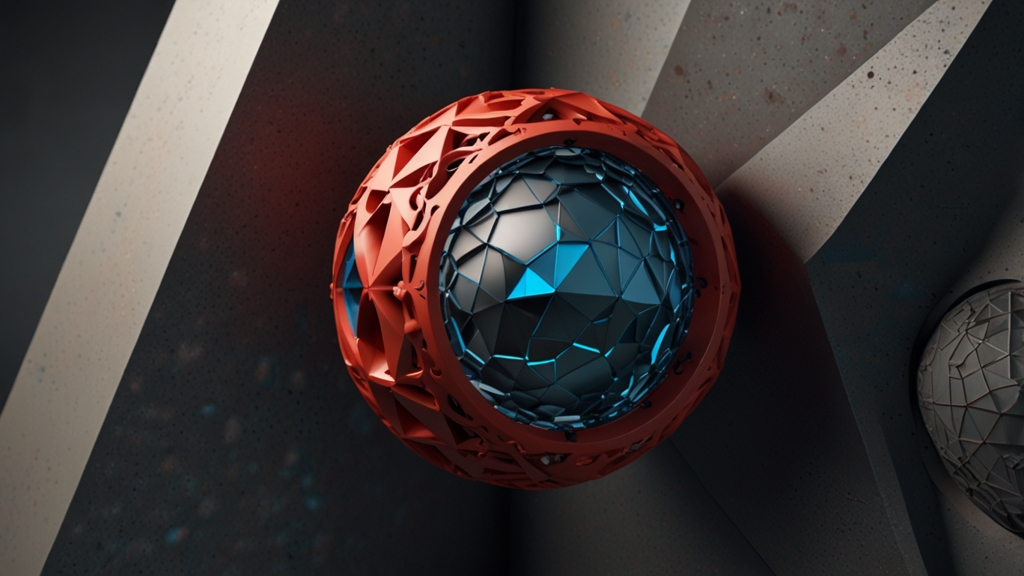Revolutionary Geometry Transforming Technology and Design
The interplay between geometry and technology has given rise to groundbreaking advancements in various fields, from architecture to data visualization. Revolutionary geometry is not just a theoretical concept spun in a mathematician's mind; it is a tangible force driving innovation and creativity, weaving itself into the very fabric of modern design and technology. This article delves into the ways in which geometry is being harnessed to transform contemporary technological landscapes and design paradigms.
Geometry as the Blueprint for Technological Innovation
Geometry fundamentally shapes the way we understand and interact with the world around us. From the architecture of our buildings to the design of our digital interfaces, geometric principles guide the creation of functional, aesthetically pleasing, and efficient structures. As technology evolves, these geometric principles are becoming more sophisticated and nuanced, leading to the development of complex algorithms and transformative technological solutions.
"Geometry, when rigorously applied, is a crucial tool in solving practical problems and creating innovative products," says Dr. Elena Hodger, a leading researcher in computational geometry. "Its applications range from simple constructions to the development of cutting-edge technologies. Geometry allows us to visualize and manipulate the spatial aspects of the world around us, opening up new possibilities in various disciplines."
Architectural Marvels and Computational Design
One of the most striking illustrations of revolutionary geometry in action is in the field of architecture. Traditional forms of architecture relied heavily on basic geometric shapes like squares and triangles. However, the advent of computational design tools has allowed architects to explore more complex geometries, resulting in iconic structures like the Guggenheim Museum in Bilbao and the Sydney Opera House.
These tools harness algorithms and parametric design principles to create forms that are not only visually stunning but also structurally sound and efficient. Advanced software enables the manipulation of geometric parameters, leading to innovative solutions to architectural challenges. This approach not only optimizes material usage but also incorporates environmental sustainability into the design process.
Transformative Impact on Product Design
Product design is another domain where revolutionary geometry is making a substantial impact. Industrial designers are now employing geometric models to conceptualize and fabricate products with intricate shapes and forms, which were once considered impossible to achieve. This has been made feasible through advancements in 3D printing technology and computer-aided design (CAD) software.
"The fusion of geometric analysis and modern manufacturing techniques has paved the way for the creation of more ergonomic, durable, and efficient products," explains Mark Wheeler, a senior industrial designer. "Whether it's in the automotive industry, consumer electronics, or medical devices, the precise application of geometric principles ensures that products not only look good but also perform exceptionally well."
Data Visualization and Information Geometry
In the realm of data science, geometry plays a pivotal role in the visualization and understanding of complex datasets. Information geometry, a branch of mathematics that applies geometric principles to statistical theory, provides valuable insights into data distributions and functional relationships. By representing data in geometric terms, researchers can identify patterns and correlations that are not immediately apparent through traditional analysis methods.
Tools like manifold learning and topological data analysis utilize geometric concepts to reduce the dimensional complexity of data, making it easier to visualize and interpret. This capability is crucial in fields like machine learning and artificial intelligence, where understanding the underlying structure of data can significantly improve the performance and accuracy of algorithms.
The Future of Geometry in Technology and Design
As we continue to push the boundaries of what is possible, the role of geometry in technology and design will only become more pronounced. Emerging fields such as quantum computing and nanotechnology are finding novel ways to incorporate geometric principles, promising to unlock unprecedented capabilities and applications.
The integration of revolutionary geometry into the fabric of design and technology heralds a future where creativity, efficiency, and sustainability coexist harmoniously. By embracing the transformative power of geometry, we can aspire to create a world that is not only more advanced but also more beautifully and intelligently designed.











